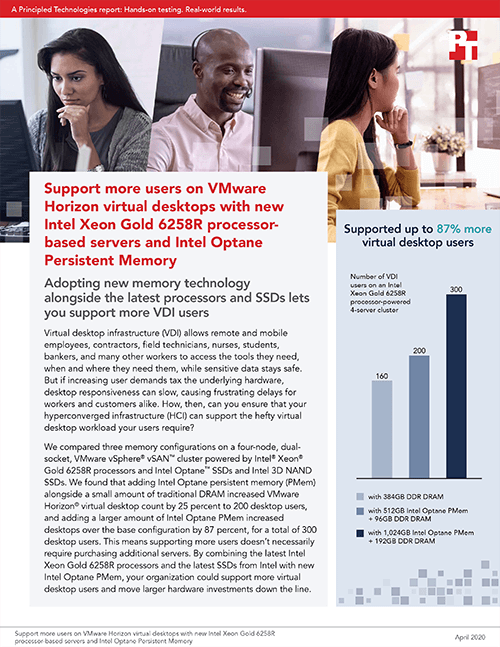Virtual desktop infrastructure (VDI) allows remote and mobile employees, contractors, field technicians, nurses, students, bankers, and many other workers to access the tools they need, when and where they need them, while sensitive data stays safe. But if increasing user demands tax the underlying hardware, desktop responsiveness can slow, causing frustrating delays for workers and customers alike. How, then, can you ensure that your hyperconverged infrastructure (HCI) can support the hefty virtual desktop workload your users require?
We compared three memory configurations on a four-node, dual-socket, VMware vSphere® vSAN™ cluster powered by Intel® Xeon® Gold 6258R processors and Intel Optane™ SSDs and Intel 3D NAND SSDs. We found that adding Intel Optane persistent memory (PMem) alongside a small amount of traditional DRAM increased VMware Horizon® virtual desktop count by 25 percent to 200 desktop users, and adding a larger amount of Intel Optane PMem increased desktops over the base configuration by 87 percent, for a total of 300 desktop users. This means supporting more users doesn’t necessarily require purchasing additional servers. By combining the latest Intel Xeon Gold 6258R processors and the latest SSDs from Intel with new Intel Optane PMem, your organization could support more virtual desktop users and move larger hardware investments down the line.







 Twitter
Twitter Facebook
Facebook LinkedIn
LinkedIn Email
Email





